
History of udaipur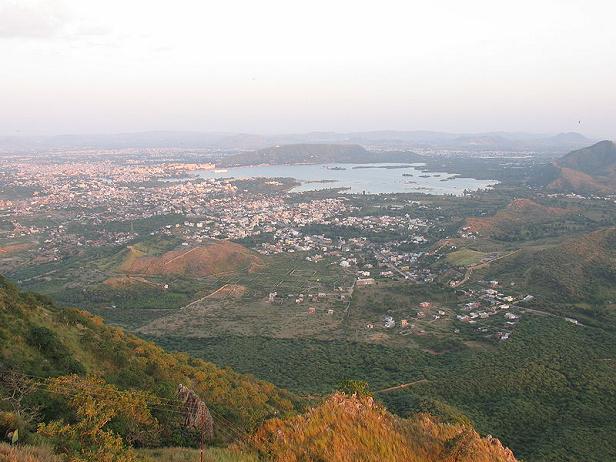 udaipur pronunciation also known as the City of Lakes and the administrative headquarters of the udaipur district is udaipur in state of Rajasthan western India. It is the historic capital of the former kingdom of Mewar in Rajputana Agency. Lake Pichola, Fateh Sagar Lake, Udai Sagar and Swaroop Sagar in this city are considered some of the most beautiful lakes in the state. In the History of udaipur was the capital of the Rajput kingdom of Mewar ruled by the Sisodia clan. The founder of udaipur was Rana Udai Singh. The ancient capital of Mewar was Nagda, located on the Banas River northeast of udaipur. Legend has it that Maharana Udai Singh came upon a hermit while hunting in the foothills of the Aravalli Range. The hermit blessed the king and asked him to build a palace on the spot and it would be well protected. Udai Singh established a residence there. In 1568 the Mughal emperor Akbar captured Chittor, and Udai Singh moved the capital to the site of his residence, which became the city of udaipur. As the Mughal empire weakened, the Sisodia ranas, and later maharanas, reasserted their independence and recaptured most of Mewar except the fort of Chittor. udaipur remained the capital of the state, which became a princely state of British India in 1818. After India's Independence in 1947, the Maharaja of udaipur acceded to the Government of India, and Mewar was integrated into India's Rajasthan state. Sisodias, or the Guhilots (Suryavansh), have ruled the Mewar region since V.S 191,were against Mughal dominion, and tried to distance themselves from them. Being a mountainous region and unsuitable for heavily armoured Mughal horses, udaipur remained unmolested from Mughal influence in spite of much pressure. Maharana Fateh Singh of udaipur was the only royalty who did not attend the Delhi Durbar for King George V in 1911. This fierce sense of independence earned them the highest gun salute in Rajasthan, 19 against the 17 each of Jaipur, Jodhpur, Bundi, Bikaner, Kota and Karauli. Rosita Forbes, who passed this land during the decline of the British Raj, described it as "like no other place on earth". Foundation of udaipur Once the capital of Mewar, udaipur was founded by Rana Udai Singh after the fall of Chittor to Akbar in 1568. Although the Rajputs were thrown out of their capital they never gave up their sense of freedom, choosing to give up their lives lives for dignity and honour instead. Legend says that Maharana Udai Singh was out hunting one day and he came upon a sage seated beside the Pichola Lake. The sage said that the king would build his palace at the same site, and then the fortunes of his family would change. The Maharana built a small shrine, Dhuni Mata, to mark the spot which is now the oldest part of the City Palace. Udai Singh chose the site of udaipur for his new capital and built an artificial lake named Udai Sagar after himself. Later he hit upon a pond said to have been made in the 15th century by a banjara (gypsy). The Architecture Expension of City The gypsy had built a dyke upon a stream for his bullocks cross over. Udai Singh further extended this pond and created one of the most picturesque man made lakes in Rajasthan. The Rana named it Pichola after the neighbouring village of Picholi. His new capital was established when in 1559 he built a small palace, Nochouki, on an overlooking ridge. Other buildings and structures soon mushroomed around the palace. With successive generations the marble and granite palace of the Rana spread out, always allowing an architectural excellence quite unique to the Mewar dynasty. The city palace went on expanding until it could claim itself to be one of the largest palaces in the world. 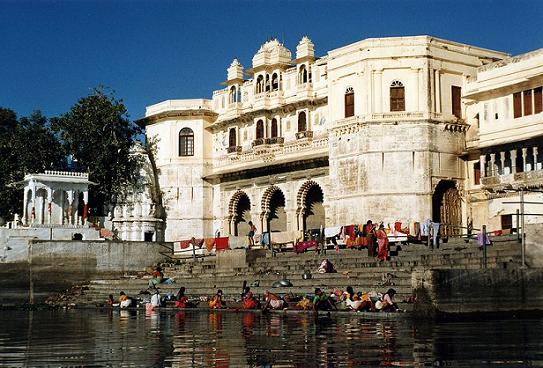 udaipur remained Untouched from Mughals Sisodias, offshoots of the Chauhanas who ruled the Mewar region, were against Mughal dominion and tried every trick possible to distance themselves from them. udaipur remained untouched from Mughal religious and aesthetics influences and remained so till the coming of the Europeans. Maharana Fateh Singh of udaipur was the only royalty who did not attend the Delhi Durbar for King George V in 1911. This fierce sense of independence earned them the highest gun salute in Rajasthan, 19 against the 17 each of Jaipur, Jodhpur, Bundi, Bikaner, Kota and Karauli. udaipur retained its romantic quality and Rosita Forbes, who passed this land of bravery during the decline of the British Raj, described it as "like no other place on earth." The Sisodia Dynasty The Sisodias claim their descent from Lord Rama, the hero of the famous Hindu epic Ramayana. It is also said that the group descended from the Sun God and is thus known as the Suryavanshi or Children of Sun. The prince of Mewar is treated as the legitimate heir to the throne of Rama. The earliest history of the clan calims that the group had probably descended from the Central Asian tribes who had moved from Kashmir to Gujarat in the 6th century. Vallabhi, their capital was invaded by raiders and the pregnant queen, Pushpavati, escaped their clutches because she was away on a pilgrimage. The queen gave birth to a baby boy, Guhil (cave born), in a cave in the mountains of Mallia and left him in the hands of Kamalavati, a Brahmin lady from Birnagar. The queen then committed sati (a widow's self immolation on her husband's funeral pyre). Guhil grew up among the tribal Bhils and in 568 AD, when he was 11, became their chieftain. Guhil also founded a new clan known as the Gehlots, who derived their name from their founder. In the 7th century they moved north to the plains of Mewar and settled in the area around Nagda. Nagda is a small town around 25km from udaipur and was named after Nagaditya, the fourth ruler of Mewar. The seventh ruler was accidentally killed by a Bhil in 734AD, and thus the three-year-old Kalbhoj became king, who later came to be known as Bappa Rawal (Bappa meaning father and Rawal a title of the Kshatriya caste). Bappa grew up as a cowherd in the town of Kailashpuri (now Eklingji) but spent much of his time studying the Vedas in the hermitage of the sage Harita Rishi. He learned to respect Lord Eklingji, and later Harita Rishi gave him the title of the Diwan of Eklingji, one that has become a legacy for the succeeding maharanas. When he was 15 Bappa came to know that he was the nephew of the ruler of Chittor who had been ousted by the ruler of Malwa. He left Kailashpuri, went to the fortress city of Chittor and snatched his kingdom back from the prince of Malwa, Man Singh Mori. In the 9th century bad luck fell upon the Gehlots who were driven away by the Pratiharas who in turn made way for the Rashtrakutas and Paramaras (for more details on the latter three dynasties see History of Madhya Pradesh). Chittor remained the capital of the Sisodias till it was sacked by the Mughal Emperor, Akbar in 1568. The Gehlots settled in Ahar, where they were known as Aharya. They maintained this title till they shifted to Sissoda. Sissoda arrived at its name when a prince of Chittor built the town right where he had killed a hare (Susso). Since then the clan has retained the title of Sisodia. However, another version says that the dynasty was so named from the word sisa or lead. It is said that a prince of the dynasty was accidentally made to eat beef. The Sisodias are staunch followers of the Hindu faith which holds the cow sacred. When the prince realised his folly he chose to atone for his blunder by swallowing molten lead. 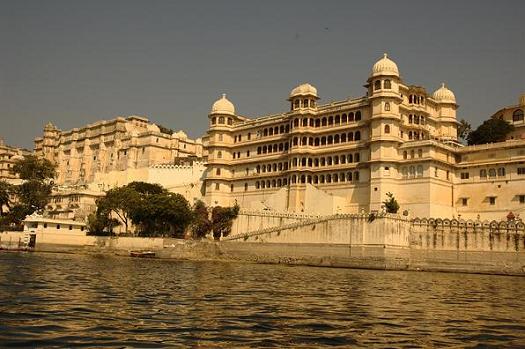 The Chivalry and Honor of the Sisodia Clan A century later they shifted to Mewar in Rajasthan. The valour and honour of the Sisodia clan is known everywhere - from the pages of history books to the folklore of Rajasthan. "O mother, give me only unto the house of the Sisodias, if you must" says the lines of a popular folk song. The Mewar dynasty is the world's oldest surviving dynasty with a time span of 1,500 years and 26 generations and has outlived eight centuries of foreign domination. Extremely possessive about their culture, tradition and honour, the Sisodias have played an important role in medieval Indian history as tireless upholders of Hindu traditions. Maharana Pratap Singh once refused lunch with Raja Man Singh because he had given away his sister in marriage to Prince Salim, later Mughal Emperor Jahangir. Man Singh avenged this insult by defeating Pratap at the battle of Haldighati. Pratap's son Amar Singh made peace with the Mughals but unable to accept his humiliation, he gave up his title in favour of his son Maharana Karan Singh. Amar Singh left udaipur never to see its landscape again. Maharana means Great Warrior, and the one from udaipur is the acclaimed head of all the 36 Rajput clans. The title of Rana was adopted in the 12th century when the Parihara prince of Mandore awarded it to the Prince of Mewar. The Mewar dynasty descends from the sun family and is hence known as Suryavanshi (descendents of the Sun) with the sun as its insignia. The central shield on the coat of arms depicts a Bhil tribal, the sun, Chittor Fort and a Rajput warrior with a line from the Gita saying 'God helps those who do their duty'. The Maharana of udaipur is crowned only after being annointed with blood drawn from the palm of a Bhil chieftain, who then leads the Maharana to the throne of Mewar. Sisodia Kings who ruled from udaipur Rana Udai Singh II - reigned 1568-1572 Maharana Pratap Singh - reigned 1572-1597 Rana Amar Singh I - reigned 1597-1620 Rana Karan Singh - reigned 1620-28 Rana Jagat Singh I - reigned 1628-54 Rana Raj Singh I - reigned 1654- 1681 Maharana Jai Singh - reigned 1681-1700 Rana Amar Singh II - reigned 1700-16 Maharana Sangram Singh II - reigned 1716-34 Rana Jagat Singh II - reigned 1734-51 Rana Pratap Singh II - reigned 1752-55 Rana Raj Singh II - reigned 1755-62 Rana Ari Singh II - reigned 1762-72 Rana Hamir Singh II - reigned 1772-78 Rana Bhim Singh - reigned 1778-1828 Maharana Jawan Singh - reigned 1828-38 Maharana Swaroop Singh - reigned 1842-1861 Maharana Shambhu Singh - reigned 1861-74 Rana Sajjan Singh - reigned 1874-84 Maharana Fateh Singh - reigned 1884-1930 Maharana Bhopal Singh - reigned 1930-55 Maharana Bhagwat Singh - reigned 1955-84 Maharana Arvind Singh from 1984- Onwards Mewar Mewar also called udaipur Kingdom) is a region of south-central Rajasthan state in western India. It includes the present-day districts of Bhilwara, Chittorgarh, Rajsamand and udaipur. The region was for centuries a Rajput kingdom that later became a princely state under the British. It was ruled by the Chattari rajputs of Guhilot and Sisodia dynasties for over 1200 years. The Marwar region lies across the Aravalli Range to the northwest, Ajmer lies to the north, Gujarat and the Vagad region of Rajasthan lie to the south, the Malwa region of Madhya Pradesh state lies to the southeast, and the Hadoti region of Rajasthan lies to the east. 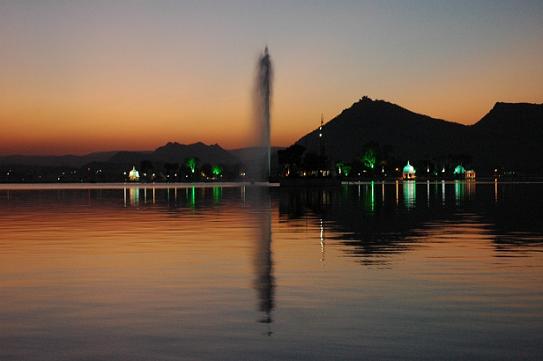 The history of Mewar over the past 1200 years is essentially the history of the dynasty and the state founded by Bappa Rawal. The Guhilots Bappa Rawal, a legendary figure in Rajput history, spent his childhood as the servant of a Brahmin family. His warlike temperament commended him to the attention of Maan Mori, a local chieftain who belonged to the Parmara clan of Rajputs Maan Mori is in some accounts said to have been Bappa Rawal's own maternal uncle. Bappa Rawal led the combined Hindu forces against invaders from west, mostly early muslim invasions on India and successfully defeated them as the chief of Maan Mori's army. Be that what it may, Bappa Rawal soon usurped the territory of his patron / uncle and established himself as ruler of Mewar, an event usually dated to 734AD. All subsequent rulers of Mewar trace their lineage to Bappa Rawal. The senior lineage of rulers descended from him were known as Guhilots (also Guhelots or Guhilas), a patronymic derived from the name of their purported distant forbear, the aforementioned Guha. Prince Khoman led another expedition a few years later in 812 A.D. uniting Rajputs and throwing the armies of Harun-al-Rashid from India and Sind. He was involved in series of battles and led armies to victory after victory culminating in 812AD when the invaders were finally thrown out. This led to a time of peace till 100 years later Md Gazni came into picture. Prince Khoman was the bravest son of Mewar and revered even today. 'Khoman-Gani' or Khamaghani, a common term used in rajasthan, when rajputs greet each other. Jauhar of 1303: Ala-ud-din Khilji, Sultan of Delhi, sent a marauding army across India at the turn of the 13th century this army, commanded by Malik Kafur, soundly defeated the Guhilot rulers of Mewar in 1303. The impending fall of Chittorgarh, the main bastion of the Guhilots, occasioned the famous Jauhar of 1303, when the womenfolk then resident within that fort collectively committed suicide rather than risk personal dishonour at the hands of the victorious invading army. The brave men wore saffron turban as a mark of performing saka, of running into battle with no hope of coming back. The injured and surviving Guhilot menfolk and their retainers are said to have subsequently took refuge in the nearby hills. The Sisodias Rana Hamir The victorious Khilji sultans assigned the newly conquered territory of Mewar to the administration of Maldeo, ruler of the nearby state of Jalore, who had allied with them during the recent war. In a bid to reconcile and co-opt the natives of the land to his rule, Maldeo arranged for the marriage of his widowed daughter Songari with Hamir, the scion of an impoverished cadet branch of the erstwhile ruling dynasty. Rana Hamir Singh re-established the state of Mewar in 1326 by engineering a coup detat against his father-in-law. The dynasty thus founded by Hamir, who was descended in direct patrilineage from Bappa Rawal, came to be known as Sisodia after Sisoda, the mountain village whence Hamir hailed. Rana Kumbha (1433-1468) was not only an expert in fortification but also an accomplished playwright and patron of music. Many of the historic monuments that dot Mewar were erected by him, including the Kumbhalgarh fort and the Vijay Stambha ( Tower of Victory ) in Chittorgarh. Rana Raimal (1473-1509) is often overlooked due to his reign being interposed between two notable rulers. Maharana Raimal came to power by defeating his patricide predecessor, Udaysingh I in battles at Jawar, Darimpur and Pangarh. Early in Raimal's reign, Ghiyas Shah of Malwa attacked Chittor unsuccessfully. Soon after, Ghiyas Shah's general, Zafar Khan attacked Mewar and was defeated at Mandalgarh and Khairabad. By marrying Sringardevi (daughter of Rav Jodha), Raimal ended the conflict with the Rathores. During Raimals' reign, Raisingh Toda and Ajmer were recaptured. Raimal also strengthened the state of Mewar and repaired the temple of Eklingji in Chittor. The last years of Raimal's rule were marked by conflict between his sons with Prince Sanga (Maharana Sangram Singh) having to flee Chittor. The oldest sons, Prithiviraj and Jagmal were both killed. At this difficult juncture, the Rana was informed that Sanga was still alive and in hiding. Raimal summoned Sanga back to Chittor and died soon afterwards. Rana Sanga (1509-1527) was among the most prominent Rajput chieftains of his day. He initially allied with an invading Babur to overthrow Ibrahim Lodi, the Sultan of Delhi, in 1526. After this was accomplished, Rana Sanga led a combined Rajput army to defeat Babur and capture Delhi, but was himself defeated by Babur at the Battle of Khanua on March 16, 1527. Rana Sanga is famous for 80 scars on his body, he embodies the spirit of rajput to fight unto immortality. Legend says after being seriously injured still wanted the battle to continue and was poisoned by some of his nobles. 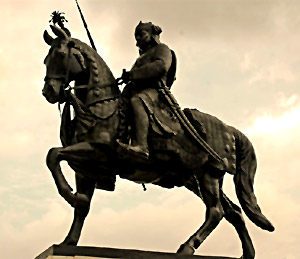 Maharana Pratap The greatest Rajput hero of all time, Rana Pratap (1540-1597) was Mewar's most illustrious ruler, true grandson of Rana Sanga in bravery, son of Rana Udai and his Songarri Chauhan Rani. Rana Pratap led the Rajputs against the Mughal army to preserve the independence of Mewar. He had to face not only Akbar's army but also had to fight against other Rajput kings like Raja Todar Mal Shekhawat and Raja Man Singh of Amber who aligned with the Mughals. In the Battle of Haldighati (1576), Maharana Pratap was badly hurt and was saved by his famous horse Chetak, who took him in an unconscious state away from the battle scene.where as Jhala Maan take all mewar symbol and continue the fight against Mughal Empire . Mughal and British Suzerainty udaipur As the armies of the Mughal emperor Akbar moved to occupy Mewar in 1568, the then ruler, Maharana Udai Singh, father of Rana Pratap, retired to safety at udaipur, in the foothills of the Aravalli Range. It was at udaipur that Pratap supplanted his father as head of the Sesodia clan. Rana Pratap's son Amar Singh was resident at the time of his father's death in exile. udaipur remained the capital of the state until it acceded unto the Union of India in 1947. Immediately after Rana Pratap's death, the Sisodias became vassals of the Mughals, and served them faithfully for nearly two centuries. When the Mughal empire went into terminal decline in the 18th century, the Sisodias ventured a measure of autonomy, but were subdued by the Marathas, who exacted crippling tributes from them annually. To add to the woes of the land, the Sisodia rulers of this period dissipated much energy and resources in petty quarrels with their neighbours. The relentless turmoil drained both the country and its ruling family in the early decades of the 19th century, the Sisodia rulers repeatedly petitioned the British Raj for protection from their neighbours and from the Marathas. Finally, in 1818, Mewar entering into subsidiary alliance with the British and became a princely state in the Rajputana Agency. This arrangement continued until the independence of India in 1947, when Mewar acceded unto the Union of India it was later integrated into the Indian state of Rajasthan. |

